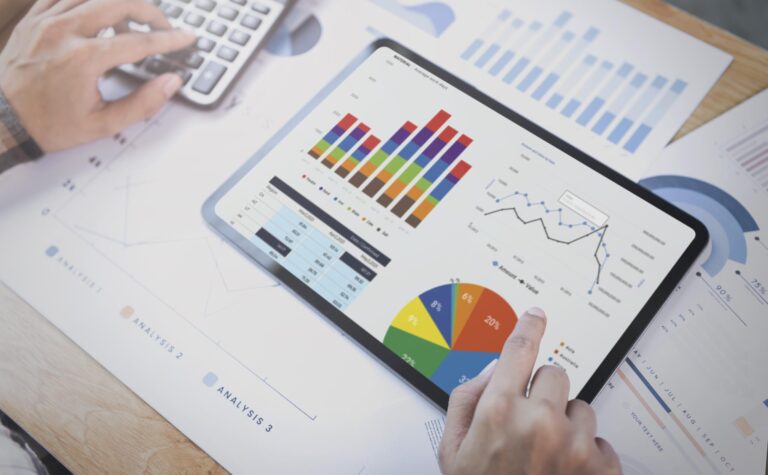In today’s data-driven world, businesses are constantly seeking ways to extract valuable insights from the vast amount of information available to them. Two terms often mentioned in this context are business intelligence (BI) and data analytics. While these terms may seem interchangeable at first glance, they represent distinct approaches to harnessing data for organizational decision-making. This article aims to demystify the difference between business intelligence and data analytics, shedding light on their unique characteristics, methodologies, and applications.
Let's Check The Difference Between Business Intelligence and Data Analytics
To truly Know Business Intelligence Vs Data analytics, it is crucial to know their individual definitions and how they differ in practice.
What is Business Intelligence? Unveiling Organizational Insights

Business Intelligence refers to the set of methodologies, processes, and Technologies used to gather, analyze, and present data in a way that aids in strategic decision-making. This approach focuses on transforming raw data into meaningful and actionable insights that guide executives and managers in understanding the state of their organization, identifying trends, and making informed choices.
Key Characteristics of Business Intelligence
- Data Aggregation: Business Intelligence involves the collection and consolidation of data from various sources, including internal systems, external databases, and market research reports.
- Reporting and Visualization: One of the Primary goals of Business intelligence is to present data in a visually appealing and easily understandable manner through reports, dashboards, and data visualizations.
- Historical Analysis: BI typically includes historical data analysis, allowing decision-makers to identify patterns, trends, and anomalies over time.
- Performance Monitoring: Business intelligence tools enable organizations to monitor their performance against key performance indicators (KPIs) and predefined benchmarks.
Applications of Business Intelligence
- Sales and Marketing: Tracking sales performance, analyzing customer behavior, and optimizing marketing campaigns.
- Finance and Accounting: Analyzing financial data, forecasting revenue, and managing costs.
- Operations and Supply Chain: Monitoring inventory levels, optimizing logistics, and identifying process bottlenecks.
- Human Resources: Analyzing employee data, monitoring workforce productivity, and identifying training needs.
What is Data Analytics? Unlocking Data's Potential

While business intelligence focuses on providing insights based on historical and current data, Data Analytics takes a more forward-looking approach. It involves the application of statistical models, algorithms, and machine learning techniques to uncover patterns, correlations, and predictions from data.
Key Characteristics of Data Analytics
- Predictive Analysis: Data analytics employs statistical models and machine learning algorithms to predict future outcomes based on historical data.
- Exploratory Analysis: Unlike business intelligence, which often seeks specific answers, data analytics explores data sets to discover new insights and ask new questions.
- Advanced Techniques: Data analytics utilizes sophisticated techniques such as data mining, predictive modeling, and natural language processing to extract meaningful patterns from complex data sets.
- Real-time Insights: Data analytics can provide real-time insights, enabling organizations to respond promptly to changing market conditions and customer preferences.
Applications of Data Analytics
- Customer Analytics: Understanding customer behavior, preferences, and sentiment to enhance marketing strategies and improve customer experience.
- Risk Analysis: Assessing and managing risks by analyzing historical data and identifying potential future risks
- Fraud Detection: Analyzing patterns and anomalies in data to detect fraudulent activities and mitigate financial losses.
- Healthcare Analytics: Leveraging patient data to improve healthcare outcomes, optimize treatment plans, and enhance operational efficiency.
- Social Media Analysis: Analyzing social media data to gain insights into customer sentiment, brand perception, and market trends.
FAQs about Business Intelligence and Data Analytics
What is the Difference B/w Business intelligence and Data Analytics?
Are Business Intelligence and Data Analytics interchangeable terms?
Can Business Intelligence and Data Analytics be used together?
Which one should an organization prioritize, Business Intelligence or Data analytics?
What are Some common tools used in Business Intelligence and data analytics?
How can Business Intelligence and data Analytics Benefit an organization?
Conclusion
In conclusion, while the terms “business intelligence” and “data analytics” are often used interchangeably, they represent distinct approaches to harnessing the power of data. Business intelligence focuses on transforming raw data into actionable insights for strategic decision-making, while data analytics employs statistical models and algorithms to uncover patterns, correlations, and predictions from data.
Both business intelligence and data analytics play crucial roles in helping organizations thrive in a data-driven world. By leveraging these approaches, businesses can unlock the full potential of their data, gain valuable insights, and make informed decisions that drive growth and success.
Pingback: What is Data Analytics Services and Solutions?
Pingback: Data Analytics Consulting Services - AS Technosoft